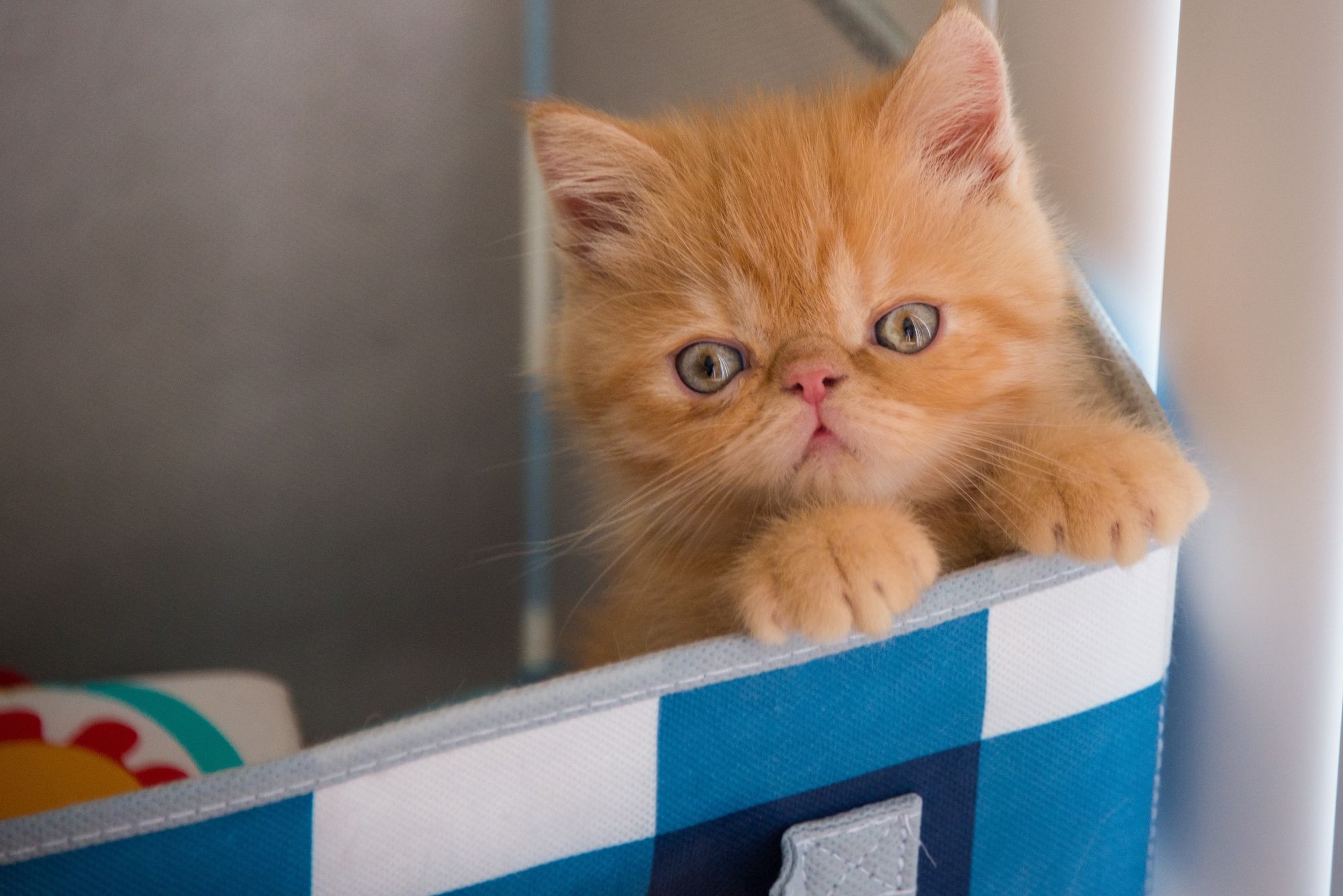Some cats get along great with other cats, some take time to get comfortable, and some simply can’t cohabitate safely. When thinking about bringing a new cat into your home, it’s very important to think about your current cat. A well managed introduction can make or break the relationship, and this article will explain:
- How to introduce your cats
- Mistakes to avoid when introducing cats to one another
- Frequently asked questions about introducing a new cat to your current cat
Steps for introducing a new cat to your current cat
Introducing your cats is all about patience, space management and being aware of how all animals are feeling. Follow these steps when introducing your cats:
- Introduce your cats through a closed door. Put your cats in separate rooms with separate bowls, beds, and litter boxes. Keep their food on either side of the same door to create a positive association to the smell and sounds of each other while they are eating, but not interacting. Every day have the cats swap rooms, this will help them get comfortable with each other’s scent.
- Graduate to a face-to-face introduction. If the cats seem relaxed after one week, allow them to see each other at a distance. If the cats are interested in each other, and seem comfortable, allow them to meet. Greetings should be short, sweet, and always under supervision.
- Reward throughout every encounter. Give each cat plenty of treats and rewards throughout each interaction. This will help the cats develop good associations about each other.
- If either animal shows signs of stress, separate them immediately. You will also want to take a step back, keep them on either side of a closed door, provide them with a blanket that smells like the other cat, and retry a face to face introduction in the future.
- Move at the pace of the more tentative animal. When considering how to proceed with the introduction process, make decisions based on how your more tentative cat is feeling.
- Be cautious when allowing the cats to roam freely. Do not allow the cats to roam freely in the same space until both animals are comfortable, and you are confident that everyone can stay safe and happy.
- Offer both animals a safe space. Even after the cats are living comfortably together, continue to offer each animal a safe space to retreat to whenever they need a break. This could mean a well equipped bathroom for one cat and a laundry room for the other cat. Each space should be equipped with food, water, a scratching post and bed.
Mistakes to avoid when introducing cats to one another
When introducing your cats, there are a few mistakes you can proactively avoid:
- Rushing the process. Do not proceed with a face to face introduction until you’re confident both cats will be calm and comfortable. Rushing can lead to over-arousal, fear and even a situation where your cats will never be comfortable in the same space. Patience is your friend.
- Feeding your cats in the same space. To ensure your cats don’t have to compete for food or water, and reduce the likelihood of conflict, give them their food and water in separate spaces.
- Long introductions. Once your cats are ready to meet, introductions should be short, sweet and frequent. Keepings things short increases the likelihood that both animals remain calm, comfortable, and have good feelings about one another.
- Leaving them unsupervised. When introducing your cats, never walk away and leave them alone. Being continually present will allow you to monitor each animal’s body language and take action if either animal shows signs of discomfort.

Frequently asked questions about introducing a new cat to your current cat
Will my cat get along with a new cat?
Some cats get along great with other cats, some take time to get comfortable, and some simply can’t cohabitate safely. When thinking about bringing a new cat into your home, consider your current cat’s temperament, learn as much as possible about the new cat’s temperament and history with other cats. If there are no red flags and you feel confident that the cats could be a good match (e.g. the foster parent tells you that the new cat is getting along well with the other cats in their foster home) then you can consider bringing the new cat home. Once the new cat is in your home, focus on introducing your cats slowly.
Do you have to separate cats when you bring home a new one?
Yes, when you bring a new cat home you should keep your cats in separate rooms and introduce them through a closed door. Equip each room with separate bowls, beds, and litter boxes. Keep their food on either side of the same door to create a positive association to the smell and sounds of each other while they are eating, but not interacting. Every day have the cats swap rooms, this will help them get comfortable with each other’s scent. Once they are comfortable on either side of the door, you can graduate to a face-to-face introduction. If the cats seem relaxed after one week, allow them to see each other at a distance. If the cats are interested in each other, and seem comfortable, allow them to meet. Greetings should be short, sweet, and always under supervision.
How long does it take for a cat to get used to a new cat?
Every cat’s timeline is different, but the key is to move at the speed of your more tentative animal and focus on how they’re feeling. By doing this, you will help your cats create a good association with each other and increase the likelihood that they have a positive and healthy relationship.
Is hissing normal when introducing cats?
If one or both cats are hissing, take a step back in the introduction process. Put your cats in separate rooms with separate bowls, beds, and litter boxes. Keep their food on either side of the same door to create a positive association to the smell and sounds of each other while they are eating, but not interacting. Every day have the cats swap rooms, this will help them get comfortable with each other’s scent. Once they are comfortable on either side of the door, you can allow them to see each other at a distance. And, if they are comfortable, you can consider another face-to-face introduction. Never hesitate to take a step back in the process. Moving slowly is the best way to build a healthy relationship between your cats.




